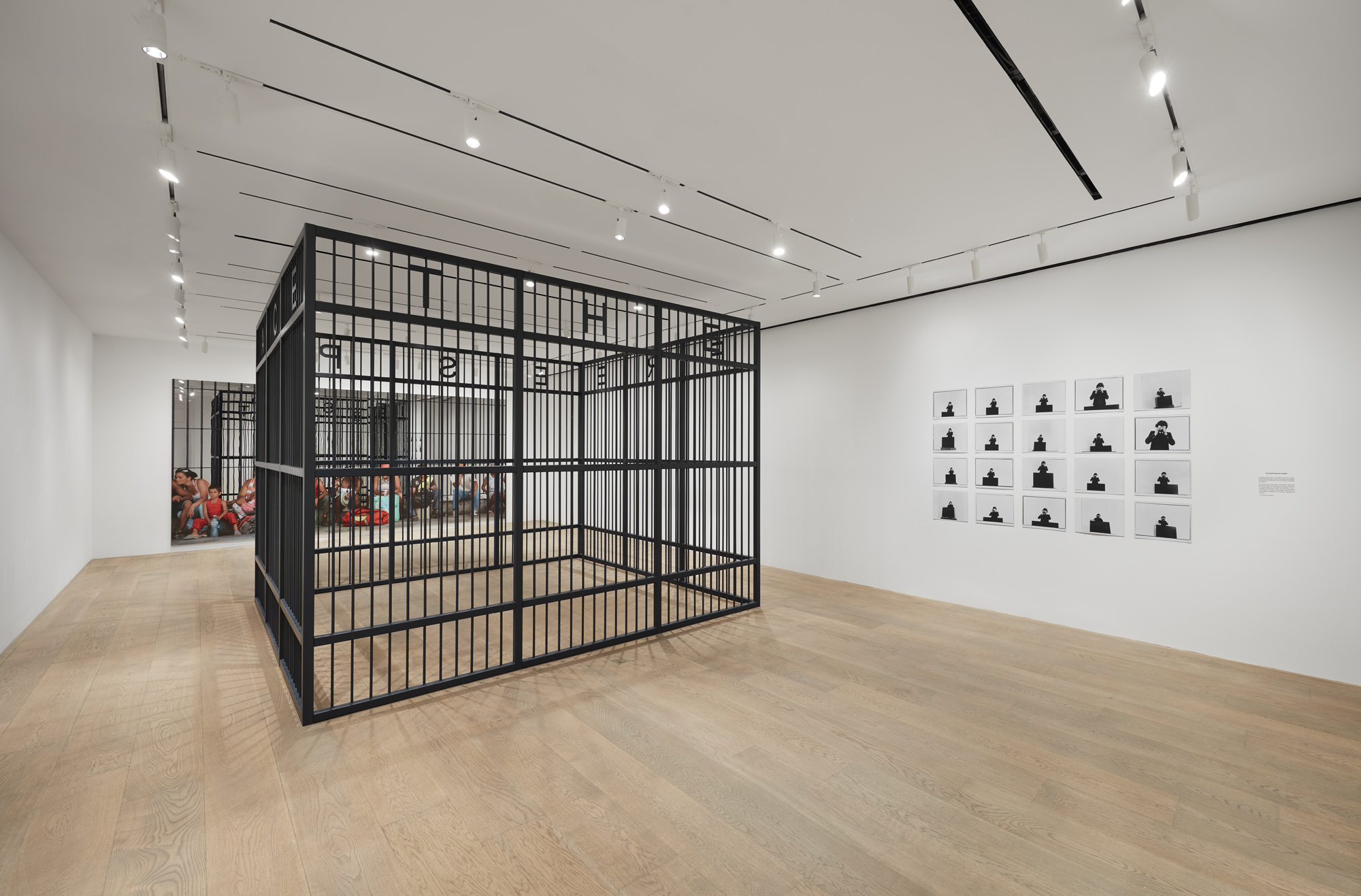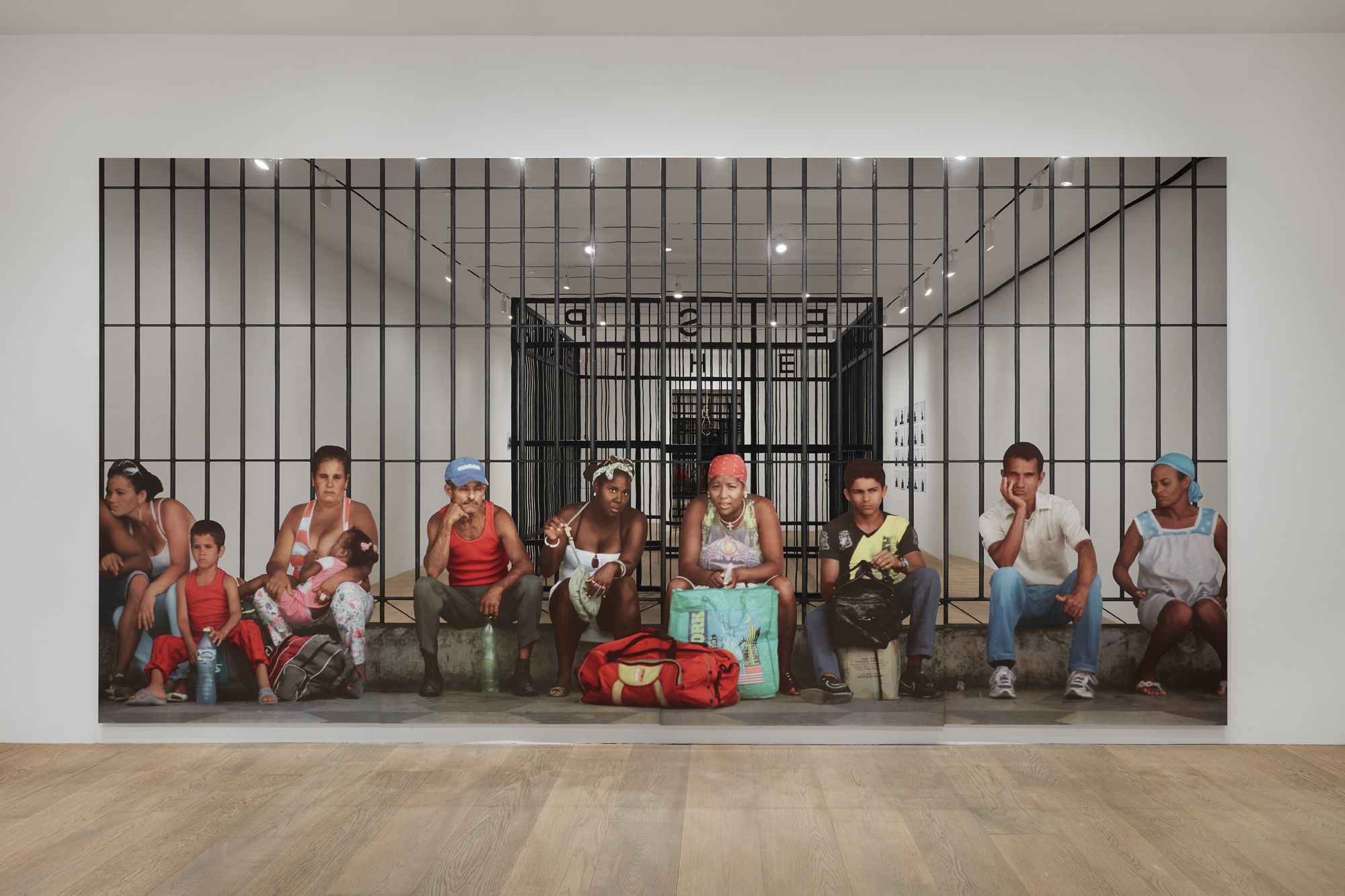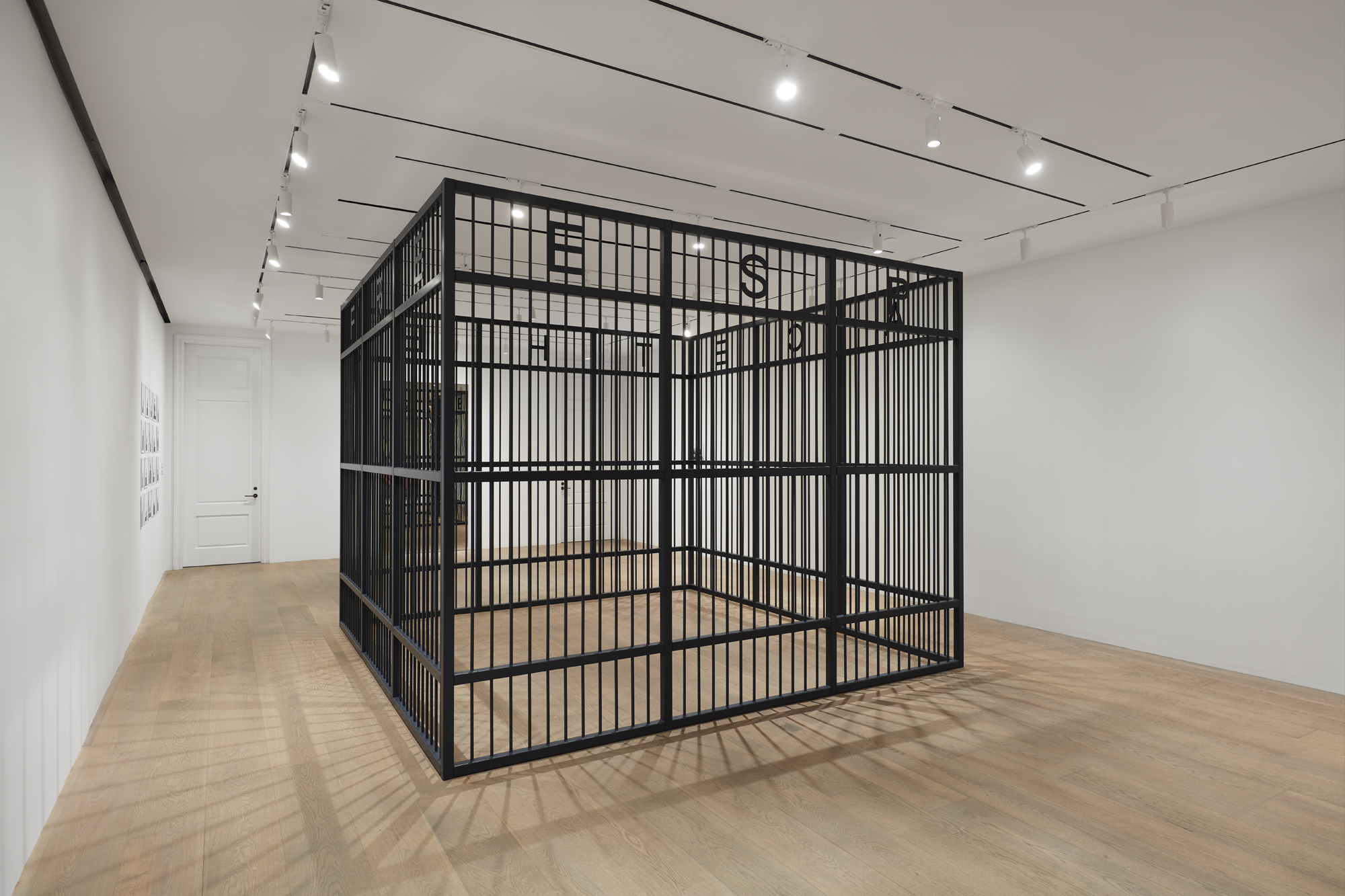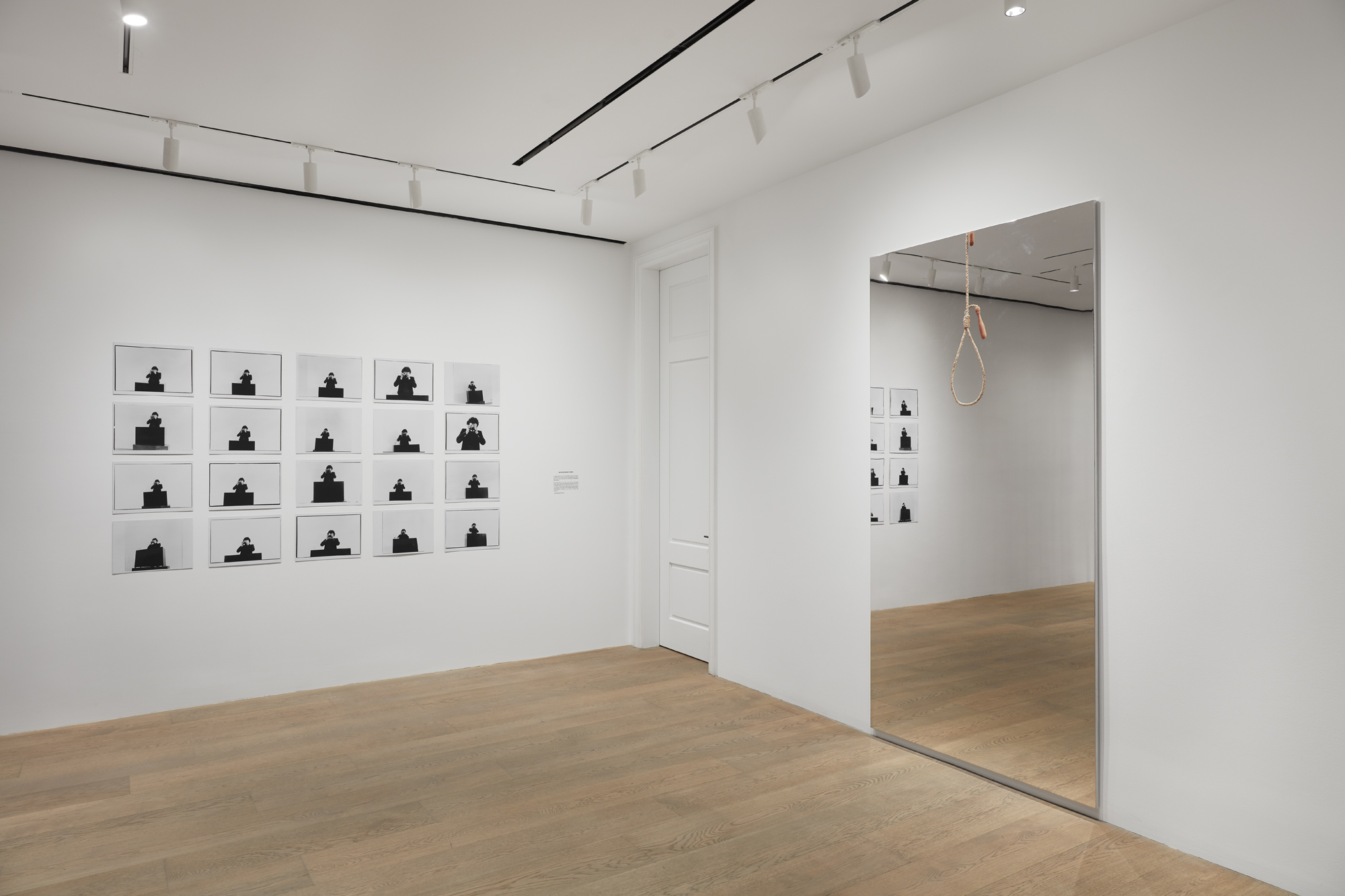Second Floor Installation Views
Together, these works explore structures of power and make a timeless statement on the deprivation of individual liberties, exploitation, and the dualities of freedom and oppression. In 1999, Pistoletto was asked to create a work of art in collaboration with incarcerated persons at San Vittore, a prison in Milan. He later recalled, “I created a free space within the jail—a mental space, a behavioral space, a virtual space that implies the concept of freedom of thought, which is the truest possession of freedom.” The original iteration of Spazio Libero has been recreated here for the first time in English as The Free Space (conceived 1976 / fabricated 2020).
La Conferenza (1975) was a performance in which a speaker photographed an audience of twenty people, while the audience likewise photographed the speaker. In the end, there were twenty images of the speaker, and just one of the audience, demonstrating how ideas are proliferated through structures of power. In the partner work, Raggi di Persone (1975), the participants took pictures of each other, demonstrating how community discussions create a chain of mutual understanding—a true democracy in which every voice is heard.
In 1973, Pistoletto made Cappio, his first non-editioned mirror painting created using silkscreen. At the time, Italy was plunging into social and political turmoil, and his works of this period often position the viewer as complicit in acts of violence, a victim, or prisoner of circumstances. For Pistoletto, the noose presents a dichotomy: it is both a means of execution, and a method by which people free themselves of life through suicide. He revisits these themes in Jump rope-noose (2020), in which a jump rope forms the noose—a memento mori that reminds us that, as Pistoletto said, “You entered into life when you were born, you are constrained by life. . . . Life puts us in a cage.” Echoing the other works, Jump rope-noose not only asks each of us to examine our complicity in violence, but also to reflect on personal and societal limits to our freedom.
La Habana, persone in attesa (2015) is a mirror painting that features a photograph of people waiting for a bus in Cuba. Pistoletto has noted that “Cuba is a symbol of a people that has fought for its autonomy, freedom, and liberty from external pressure.” He understands Cuba as a nation that now exists in a political and economic “cage,” facing an international embargo. While the bars behind these figures are not those of prison, the resulting image brings to light another duality—that of a people who have struggled for their freedom from oppression, only to find themselves confined by global systems that perpetuate a culture of dominance.




